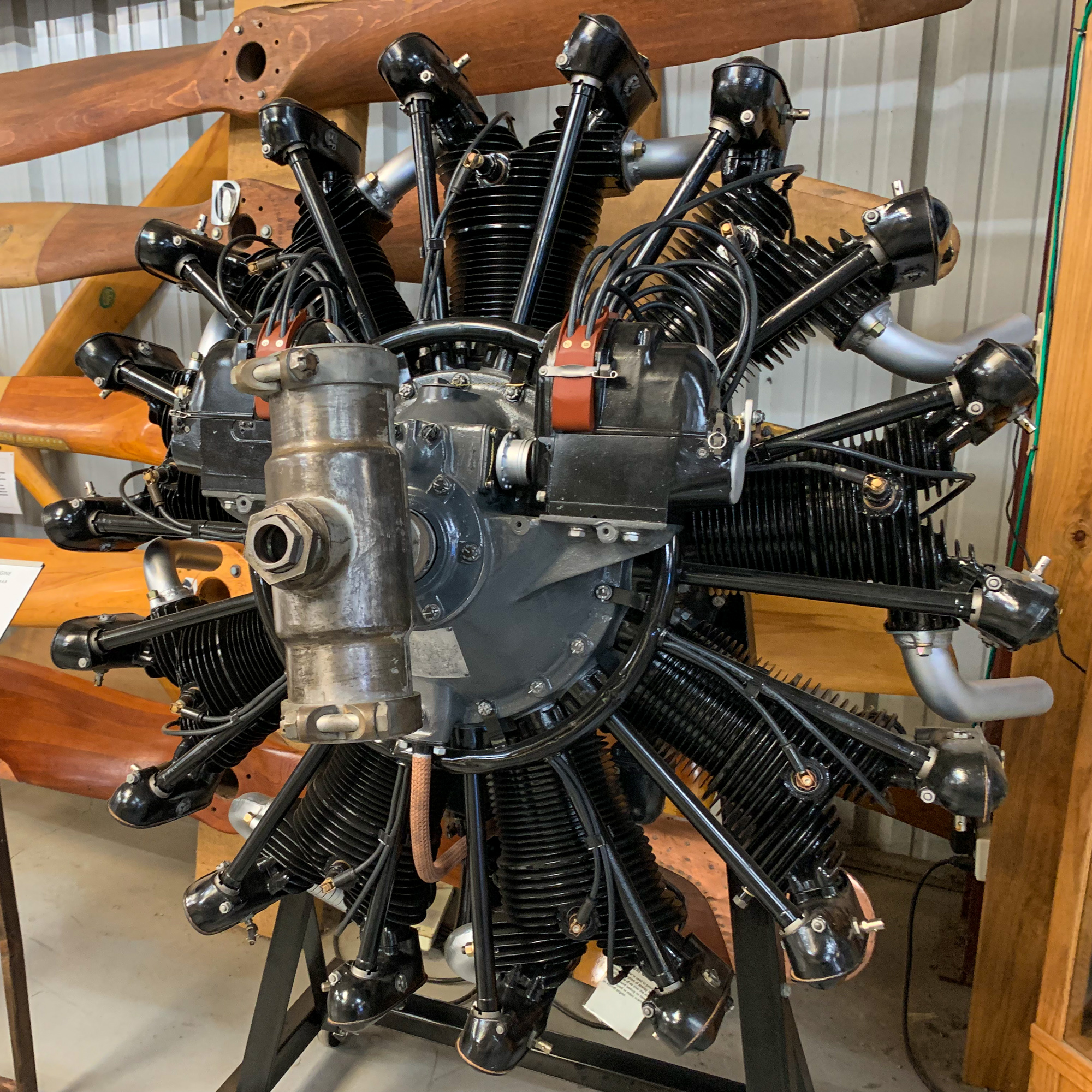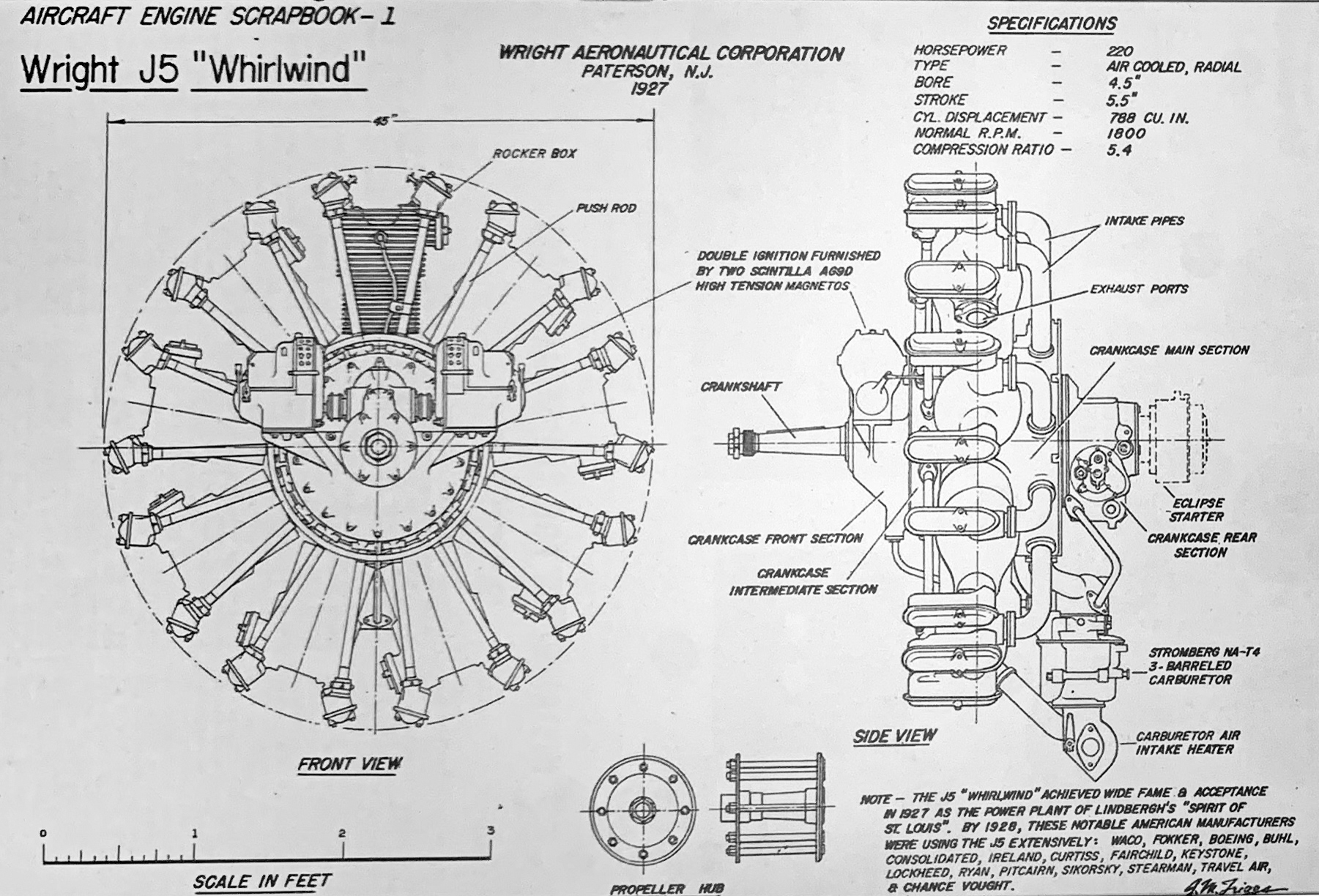Arguably the most important radial engine ever produced, the Wright J-5 was the first commercially successful radial engine. First introduced in 1925 as a replacement for the exposed valve train J-4, the J-5 won immortality as the engine that carried Charles Lindbergh and the Spirit of St. Louis across the Atlantic in May 1927 to win the $25,000 (about $400,000 in 2020) Orteig Prize for non-stop flight in either direction between New York City and Paris. FR
After Lindbergh’s dramatic flight, aircraft companies began springing up across the nation and the J-5 was often the engine of choice to power these new aircraft. A list of aircraft utilizing the J-5 includes Waco, Travel Air, Lockheed, Stearman, Stinson, new Standard, Ford, Spartan, Curtiss, Fairchild: the list goes on…
Developing its peak power at only 1800 rpm, the J-5 became known for high torque. Long after the engine was no longer being installed on new production aircraft, crop dusters of the 1940’s still preferred the J-5 over newer designs for its ability to haul a load. Though a dependable engine by 1920’s standards, the J-5 soon became a dated design due to its detachable rocker boxes, manually greased rocker arms, and lack of a generator on most models. Also, because the J-5 was never produced in great quantities for the military, replacement parts became a problem. As the 1930s ended, many operators switched to other engines.
Today, after about 100 years, there are still a very few aircraft powered by J-5’s..
| Engine Name | WRIGHT J-5A-B "WHIRLWIND" |
|---|---|
| Manufactured by | Wright Aeronautical Corporation in Patterson, NJ |
| Cylinder Configuration | radial |
| Number of Cylinders | 9 |
| Bore (inches) | 4.5 |
| Stroke (inches) | 5.5 |
| Displacement (cubic inches) | 778 |
| Horespower | 200 HP@1800 RPM |
| Fuel Type | Gasoline |
| Weight (lb) | 520 |
| Serial # | 8319 |


